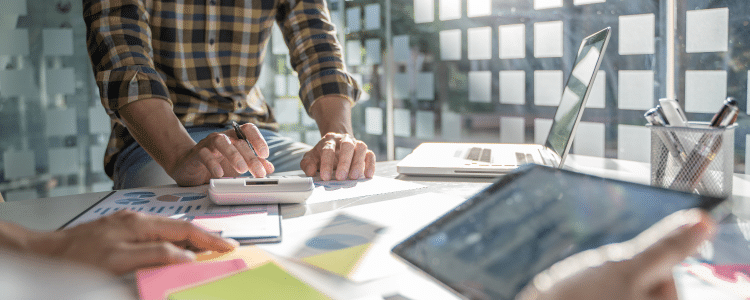As you’re evaluating enterprise software, you’ve probably realized the importance of robust business intelligence (BI). However, do you know what vendors are prioritizing the BI trends that matter most to your business?
The only way to know what vendors are right for you is to understand what’s trending and which trends align with your needs.
Let’s explore the business intelligence technology trends that are enabling data driven decision-making in boardrooms across the globe.
The Latest Business Intelligence Technology Trends
1. The Popularity of Self-Service BI
Traditionally, business analytics involved multiple checkpoints and stakeholders.
Today, data insights are accessible to just about any stakeholder with a query.
This is because modern BI platforms are built on the concept of self-service. Using natural language processing (NLP), these platforms can interpret user queries and generate customized reports.
These platforms also have user-friendly features, like interactive dashboards, drag-and-drop interfaces, and visual data exploration.
For example, the top manufacturing ERP systems include BI dashboards that allow users to model different production strategies and immediately see the potential effects.
Software Selection & Process Improvement Case Study
In helping the client get its project back on track, one of our primary focus areas was decreasing their customization needs by improving their processes to align with the system's best practices.
2. The Importance of Data Governance
To realize value from your BI investments, it’s important to develop a data governance strategy. This is a framework that ensures the integrity and security of data sets. It encompasses:
- Data Quality Management: At the core of data governance is a commitment to data quality. This means focusing on data cleansing, validation, and standardization to ensure data is consistent and reliable.
- Data Security Protocols: A data governance strategy should prioritize advanced security measures such as encryption, access controls, and regular security audits. This reinforces regulatory compliance, while safeguarding data against unauthorized access and potential breaches.
- Regulatory Compliance: Organizations must adhere to a myriad of regulations that dictate how data should be handled, stored, and processed. Your data governance should incorporate practices such as strict data access controls for GDPR compliance and clear opt-out options for CCPA adherence.
3. The Growth of Collaborative Business Intelligence
While the concept of collaborative BI has been around for quite some time, new and more advanced tools are emerging by the day.
Today, users can share analyses, annotate reports, and engage in discussions in real time.
Some organizations are even using augmented reality (AR) and virtual reality (VR) to enable immersive data visualization experiences. This allows users to interact with each other and with data in a three-dimensional space, making complex data sets more accessible.
4. The Popularity of AI and Machine Learning in Data Analytics
The integration of artificial intelligence (AI) and machine learning into BI platforms is becoming commonplace. In fact, many of the top ERP systems feature AI-driven business intelligence.
Machine learning algorithms excel at tasks such as predictive analytics and natural language processing (NLP).
In terms of predictive analytics, machine learning can analyze historical sales data to predict demand, helping organizations optimize inventory management.
In terms of NLP, machine learning can understand plain language and provide actionable answers, enabling a broader range of users to query data.
(Learn about AI in ERP systems.)
5. The Increasing Necessity of Strong Data Security
In an era where data breaches are on the rise, enhanced data security measures are top of mind.
Today’s cyber threats are sophisticated, and a robust security framework is essential. This framework should include security measures such as multi-factor authentication, end-to-end encryption, and real-time monitoring systems.
Some organizations are adopting advanced threat detection algorithms and AI-driven security protocols to predict and mitigate vulnerabilities before they can be exploited.
By embedding these features into BI tools, organizations can create a secure environment that safeguards against unauthorized access and data leaks.
6. The Diversification of Data Sources
Organizations are increasingly tapping into a wide array of data sources, including cloud-based storage, IoT devices, and social media platforms.
For example, combining customer interaction data with sales data offers deeper insights into customer behavior and preferences, enabling more targeted marketing.
The challenge lies in effectively managing and integrating diverse data sources to ensure data consistency and reliability.
One solution is implementing a cloud-based BI solution. This type of platform integrates data from various sources without the need for significant upfront investment.
The Future of Business Intelligence is Here
These business intelligence trends demonstrate just how vital data is becoming to business decision-making.
Are you using data as a strategic asset to drive innovation, efficiency, and competitive advantage? If not, learn how you can get started by requesting an ERP consultation below.














